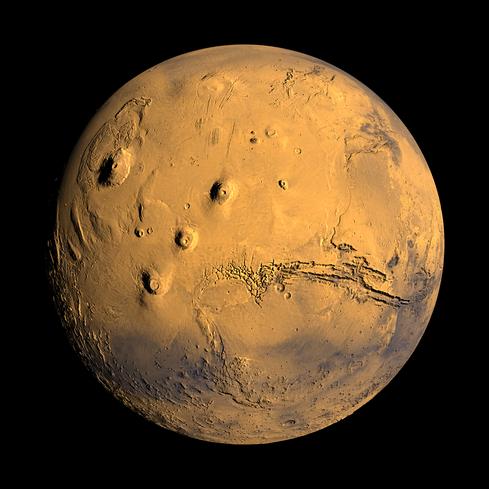NASA Software Audit Reveals Budgetary Black HoleNASA Software Audit Reveals Budgetary Black Hole
The complex software designed to help launch NASA's SLS system is more than a year behind schedule and wildly over budget. The agency is currently on track to spend over $200 million developing its own code for the project.


Mars Missions In Focus: NASA , ESA, MRO Aim For Red Planet
Mars Missions In Focus: NASA, ESA, MRO Aim For Red Planet (Click image for larger view and slideshow.)
NASA is well known for its successful deep space expeditions, but an audit from the agency's Office of Inspector General (OIG) has found a budgetary black hole right here on Earth.
An audit of NASA's spaceport command and control system software project revealed that development costs have increased approximately 77%, to $207.4 million. The release of a fully operational version has slipped by 14 months from July 2016 to September 2017.
The Spaceport Command and Control System (SCCS) software is designed to control pumps, motors, valves, power supplies, and other ground equipment, and to monitor the health and status of spacecraft as astronauts prepare for launch. It's also designed to record and retrieve data from systems before and during launch.
The audit warns that delays with such software designed for the Space Launch System (SLS) rocket could affect the ability to react to unexpected issues during launch operations, and could impact the launch schedule for the unmanned Orion system, which is due to lift off in 2018.
The SLS rocket will help NASA prepare for missions to Mars.
The first exploration mission would allow the space agency to use the lunar vicinity as a proving ground to test technologies farther from Earth, and demonstrate it can get to a stable orbit in the area of space near the moon in order to support sending humans to deep space.
The root of the budgetary issues appears to result from NASA's June 2006 decision to integrate multiple products or parts of products rather than develop software in-house or buy an off-the-shelf product.
The report noted writing computer code to "glue" together disparate products has turned out to be more complex and expensive than anticipated.

Create a culture where technology advances truly empower your business. Attend the Leadership Track at Interop Las Vegas, May 2-6. Register now!
As the report states, NASA's developers created 2.5 million lines of "glue-ware" code as of January, with almost two more years of development activity planned.
In comparison, NASA re-engineered the Hubble Space Telescope command and control system with approximately 500,000 lines of glue-ware code.
NASA officials estimate that it will take programmers an additional 49,176 hours to complete development of version 4.0 of the SCCS.
"In our judgment, the program's reluctance to change course reflects a cultural legacy at NASA of over-optimism and over-promising what the agency can achieve in a specific timeframe," according to the inspector general's audit, which was released March 28.
In addition, several planned capabilities have been deferred because of cost and timing pressures, including the ability to automatically detect the root cause of specific equipment and system failures.
"NASA made its decision regarding the SCCS software architecture nearly 10 years ago, but in our view this may no longer be the most prudent course of action given significant advances in commercial command and control software over that time," the report noted.
This isn't the first time NASA has experienced difficulties with similar large, complex software development efforts.
Between 1995 and 2002, the agency spent more than $500 million on two separate attempts to update command and control software at Kennedy Space Center. Both efforts failed to meet their objectives and were substantially scaled back or cancelled prior to completion.

About the Author
You May Also Like






